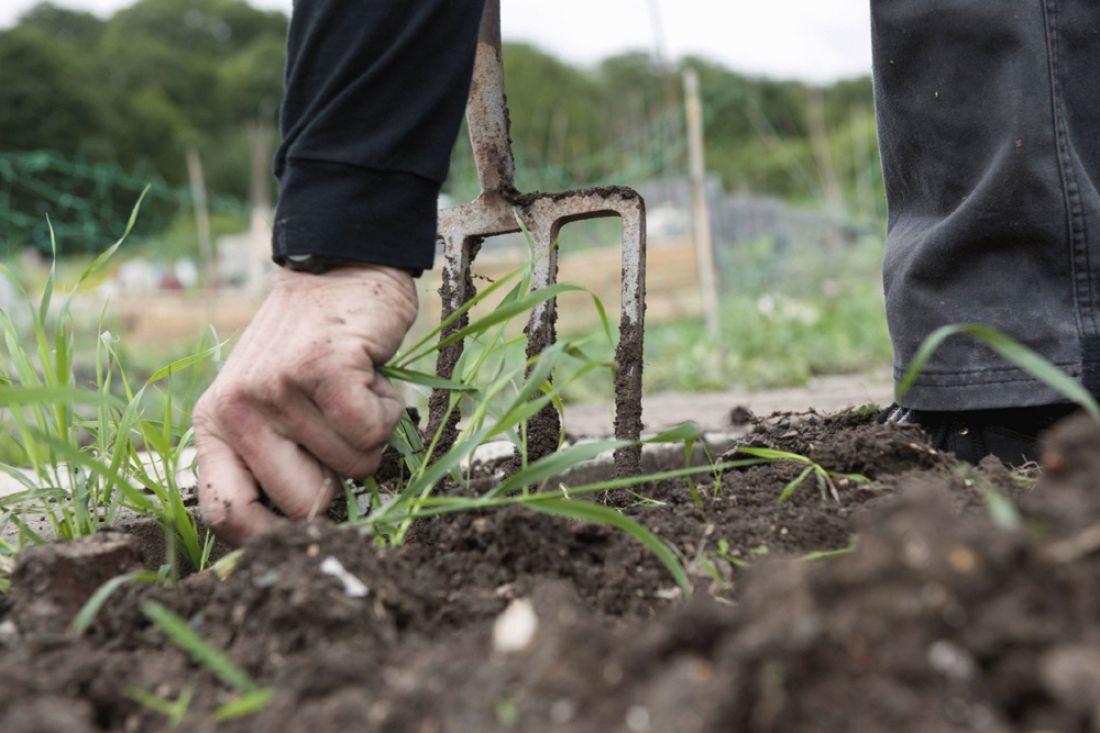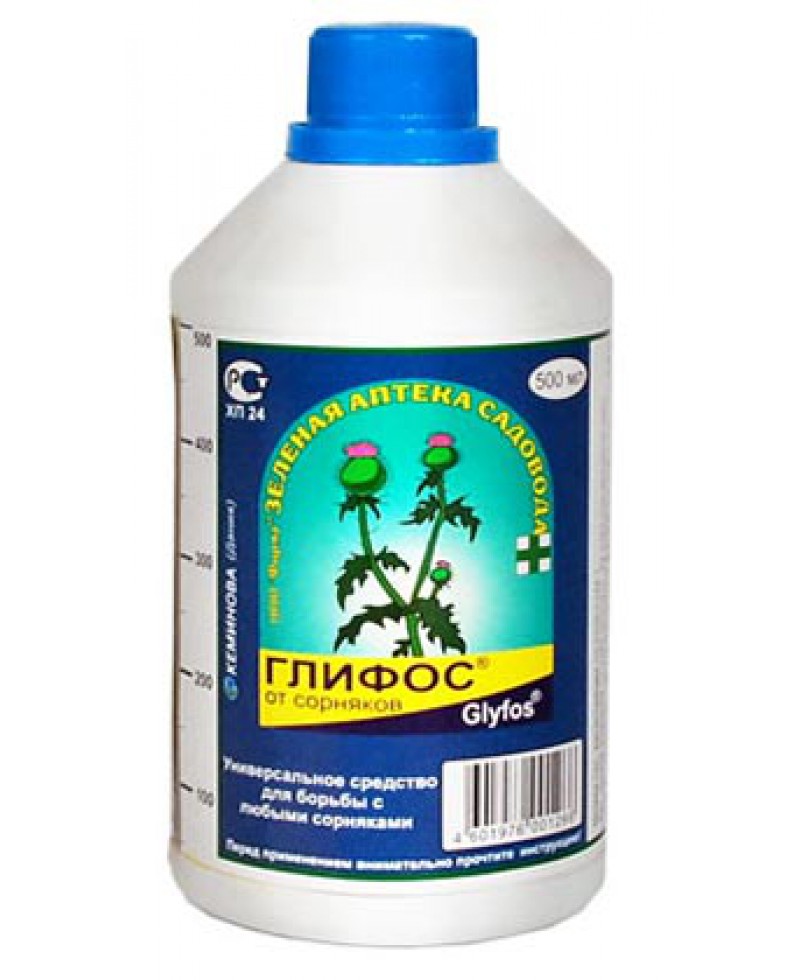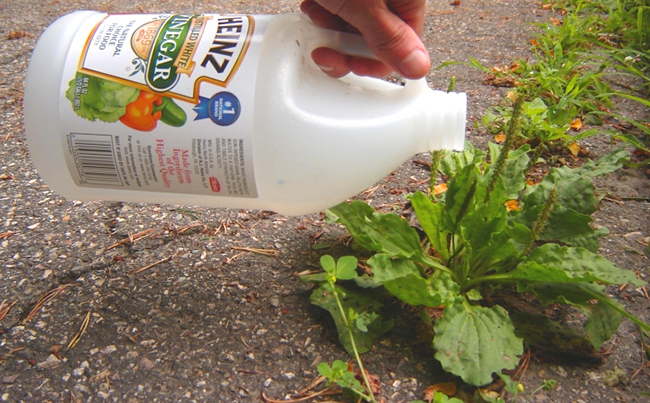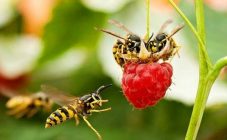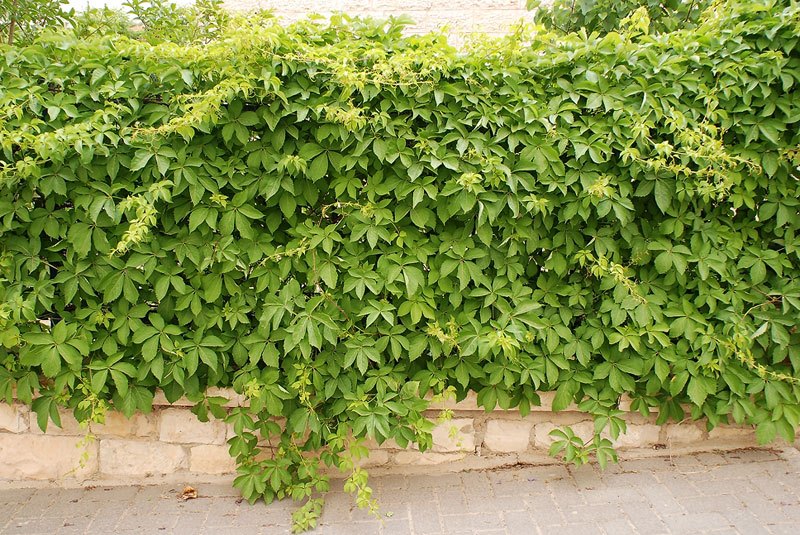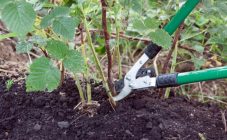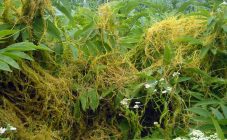Content:
Weeds on the site constantly interfere with the growth of cultivated plants, taking energy, sunlight and nutrients from the soil. Therefore, you need to constantly fight against the weeds in order to get rid of it to get a harvest. Over the years, many methods of weed control have been developed by mankind.
Among them are the traditional weeding or uprooting of weeds, and the chemical burning of plants with herbicides, as well as completely atypical methods, such as burning out weeds with fire, the use of alcohol and other, no less exotic methods.
Mechanical control of grass and weeds
Mechanical methods imply direct intervention in the growth of weed crops. They include weeding, cleaning with the help of technology. The methods are quite time consuming, and in order to achieve the result, you will need to repeat the pulling out or bevel of the weeds several times.
Weeding as a method of removing weeds on the site
Mechanical methods take a lot of effort and time, but are one of the most effective ways to completely clear the area of weeds. However, if the hoe is incorrectly operated or weeded at the wrong time, the remnants of weed roots will remain in the soil, which will lead to their re-growth.
Correct weeding is done as follows:
- You need to start weeding the garden until the roots of weed crops reach the maximum size.
- When digging, it is best to use a pitchfork. The sharp edge of the shovel cuts through the roots of the weeds, which greatly increases the chances of new plants emerging.
- The roots must be removed completely. After rain or watering, getting rid of the root system is much easier.
- It is best to start weeding before the seeds form. They retain the ability to grow into a full-fledged plant for up to 3 years.
How to get rid of grass in an area using mulching
Mulching is one of the most effective ways to get rid of weeds in your garden. However, this method has a significant drawback - it usually takes a lot of time to get rid of the grass in the garden. It is necessary to wait until the plants die by themselves from the lack of nutrients. The method involves covering the soil with an opaque film, roofing felt or other material that does not transmit sunlight. If you need to completely get rid of the grass, weeds on the site will need to cover the entire site in spring. You can remove the shelter only after a year.
For mulching, it is better to use organic material - sawdust or previously plucked grass. Compared with roofing material, which heats up strongly and releases resin into the soil, and a film that releases a huge amount of heat into the soil at high temperatures, which changes its qualitative composition, the method is considered harmless. However, a sufficiently dense layer of mulch must be provided. The minimum thickness is 10 cm.
Mechanical restoration
This method is used to remove perennial grasses that are difficult to remove by hand. This will require a walk-behind tractor with plowing attachments. After processing with a walk-behind tractor, you need to carefully go through and select the remnants of plant roots. The method makes it possible to completely remove plants from the site, but it requires a very large investment of time and effort. You need to remove the grass patiently and scrupulously, not missing a single shoot or root, no matter how much they sprout. Leaving the grass cover, it will be difficult to remove it again.
Treatment chemicals: drugs and herbicides
Herbicide benefits:
- do not require a lot of effort;
- fast action;
- the effect does not depend on the weather.
Disadvantages of herbicides:
- harm insects and animals;
- low efficiency against perennial plants;
- can cause stress in cultivated plants;
- the grass can develop resistance to herbicides.
There are two types of herbicides on the product market:
- systemic - upon contact with plant stems, leaves or flowers, the substance penetrates both the aboveground and underground parts. In this case, the root dies off completely, and the plant dies;
- contact - the substance acts only on the point of contact.
How to water the grass so that it does not grow on the site? According to the spectrum of action, such drugs are divided into selective and general actions. Selective herbicides target only one specific variety of plant pests. Substances of general action destroy absolutely all cultures that fall on. Thus, the herbicide can lead to the death of even cultivated plants if the solution gets on them. Therefore, it is necessary to poison weeds only with the help of a sprinkler with a narrow stream.
It is advisable to use continuous herbicides to control strong weeds that cause allergic reactions, for example, hogweed or ragweed. It is desirable to carry out the treatment before the formation of seeds. It is also better to check the weather forecast before the procedure. The substances work for a long time, therefore, if it rains immediately after spraying, it will be able to destroy all the effect of pesticides.
What other remedies are available to prevent the grass from growing
To prevent the grass from growing on the site, in addition to the chemical method, you can use bacterial agents, or EM preparations. EM decoding - effective microorganisms. To do this, you first need to cut the stems of weeds with a sharp hoe, then water the area with a solution of the drug with microorganisms. The ratio of funds to water is 1: 100. As a result, the roots will quickly rot.
In addition to using EM drugs, you can re-plant the area with mixed crops. So, planting vegetables, berries and herbs is well suited. The plants need to act as mulch, which will prevent the grass from growing between them. Well suited for front gardens.
Planting siderates or fast-growing vegetables that will absorb nutrients from the soil, preventing useless herbs from growing, is also a good way out.The denser the green manure grows, the better the effect of the method. However, do not plant green manure too densely, otherwise they will not be able to produce a crop.
Weed control in the garden with folk remedies
How to get rid of weeds with folk remedies using vinegar
Vinegar can be used as an alternative to herbicides and chemicals. Vinegar spray is easy to make at home. It will take 2 tbsp. water and vinegar, a bag of citric acid, 30 ml of alcohol and 2 teaspoons of dishwashing liquid. All this is mixed in a container of a suitable size, does not need to be diluted with water, and is poured into a spray bottle. Next, you need to process the weeds. However, the use of vinegar irrigation can also destroy cultivated plants. The strong alkaline environment easily destroys all shoots and helps to get rid of garden pests.
Saline solution
An ordinary saline solution can be an excellent remedy for the growth of grass on the site. A liquid, strong solution or filling the soil with rock salt will help to etch out unnecessary greens. The latter method will require approximately 1.5 kg of salt per 1 m². Fog, dew and rain will help it to soak into the soil, destroying all roots.
Other ways to deal effectively with grass without chemicals
In the course of the fight against harmful crops, several more ways of fighting were found. Some of them:
- Alcohol use. The method is associated with weeding. A 6% alcohol solution (or 15% vodka solution) is added to the soil, which accelerates the growth of the grass. After the shoots appear, you can quickly weed out the plants, which will get rid of them for several seasons.
- Soil processing by fire. It is good to use in areas with crops that germinate late. Weeds appear earlier than useful plants. To burn out the weeds, you need to draw the sliding fire of a gas lamp along the ground, in which case the stems will quickly die. After the procedure, it is recommended to water the ground. But it is important to know that the destruction of the herbal mixture can lead to a decrease in soil fertility.
- Cutting the stems with a hoe. The method is based on making the weeds constantly spend useful substances for recovery after cutting. You will need to do this several times a season.
- Dilute 6 tbsp in a bucket of water. tablespoons of soda and 1 tablespoon of grated soap. Pour into a sprayer and process 3 times at weekly intervals.
How to get rid of the grass in the garden? This question has been plaguing gardeners for many years. And many ways have been invented to solve the problem. Each of them will be effective to remove weeds in a given situation.
